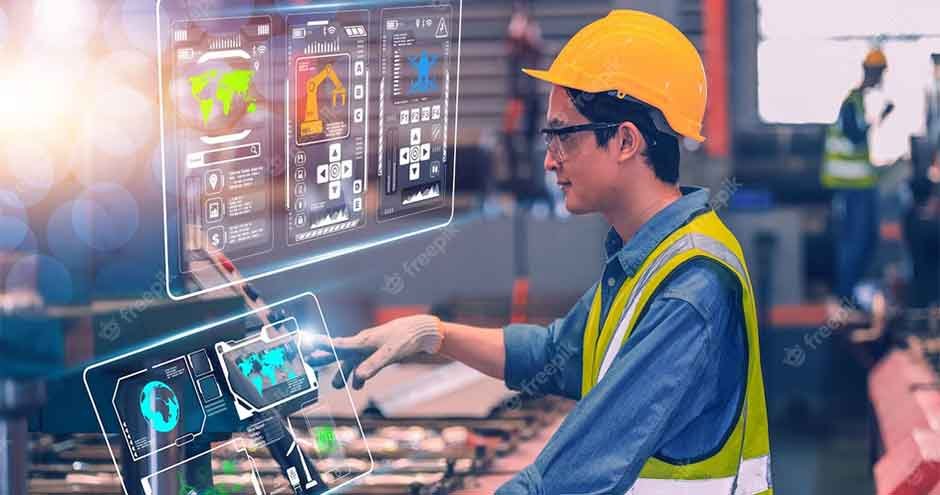In the world of industrial automation, control systems play a vital role in the proper functioning of machinery and equipment. In this regard, Modicon, PLC, PAC, and Dedicated Controllers are among the most commonly used systems. These systems are designed to provide precise control and monitoring of industrial processes, thereby enhancing efficiency and productivity. In this article, we will explore the features, benefits, and applications of these systems.
Modicon
Modicon is a brand of programmable logic controllers (PLCs) that was first introduced by the French company Modicon in 1968. Today, the brand is owned by Schneider Electric, a global leader in energy management and automation solutions. Modicon PLCs are known for their reliability, durability, and flexibility, making them ideal for a wide range of industrial applications.
Modicon PLCs use a ladder logic programming language that allows users to create custom logic programs for controlling and monitoring equipment and processes. These programs can be modified and updated as needed to adapt to changes in the production process. Modicon PLCs also offer a wide range of communication options, including Ethernet, serial, and fieldbus protocols, allowing for easy integration with other automation systems.
Modicon PLCs are commonly used in industries such as automotive, food and beverage, and pharmaceuticals. They can be used to control and monitor various processes, including assembly lines, material handling, and packaging.
PLC
A programmable logic controller (PLC) is a type of industrial computer that is designed to control and monitor machinery and processes. PLCs are widely used in industrial automation systems to perform tasks such as turning on and off machines, monitoring sensors and alarms, and collecting and analyzing data.
PLCs use a ladder logic programming language, which is similar to the relay-based control systems used in older industrial applications. This programming language allows users to create custom logic programs that can be easily modified and updated as needed. PLCs can also communicate with other automation systems, allowing for seamless integration with other equipment and processes.
PLCs are commonly used in industries such as manufacturing, oil and gas, and transportation. They can be used to control and monitor a wide range of processes, including assembly lines, conveyor systems, and robotics. For more information and details, visit Mro Electric blog.
PAC
A programmable automation controller (PAC) is a type of industrial control system that combines the functionality of a PLC with that of a computer. PACs are designed to perform advanced control and monitoring tasks, including data acquisition, motion control, and high-speed processing.
PACs use a variety of programming languages, including ladder logic, structured text, and function block diagramming. This allows users to create complex control programs that can perform advanced tasks, such as machine vision, motion control, and robotics. PACs also offer a wide range of communication options, including Ethernet, serial, and fieldbus protocols, allowing for easy integration with other automation systems.
PACs are commonly used in industries such as aerospace, defense, and automotive. They can be used to control and monitor a wide range of processes, including advanced robotics, machine vision, and motion control.
Dedicated Controllers
Dedicated controllers are a type of industrial control system that is designed for specific applications. These controllers are typically pre-programmed to perform a specific function, such as temperature control or motor control. They are often used in applications where a customized solution is required, but the cost and complexity of a full PLC or PAC system is not justified.
Dedicated controllers are often used in industries such as HVAC, lighting control, and water treatment. They can be used to control and monitor a wide range of processes, including temperature control, lighting control, and water treatment.
Benefits of Control Systems
The use of control systems in industrial automation offers many benefits, including increased efficiency, improved safety, and reduced downtime. By
providing precise control and monitoring of industrial processes, these systems can help to optimize production and reduce waste. They can also improve worker safety by automating hazardous or repetitive tasks, and by providing real-time feedback on equipment performance.
In addition, the integration of the PRTG OPC UA server into control systems can significantly enhance their ability to reduce downtime by providing advanced diagnostics and predictive maintenance capabilities. By monitoring equipment and processes in real-time, these systems can detect potential issues before they become major problems, allowing for proactive maintenance and repair.
Conclusion
Modicon, PLC, PAC, and Dedicated Controllers are all important types of industrial control systems that are used to control and monitor equipment and processes in a wide range of industries. Each of these systems has its own unique features and capabilities, making them ideal for different applications and environments.
Regardless of the specific system used, the use of control systems in industrial automation offers many benefits, including increased efficiency, improved safety, and reduced downtime. As the demand for automation and digitalization continues to grow, these systems will play an increasingly important role in driving innovation and enhancing productivity in industrial settings.


